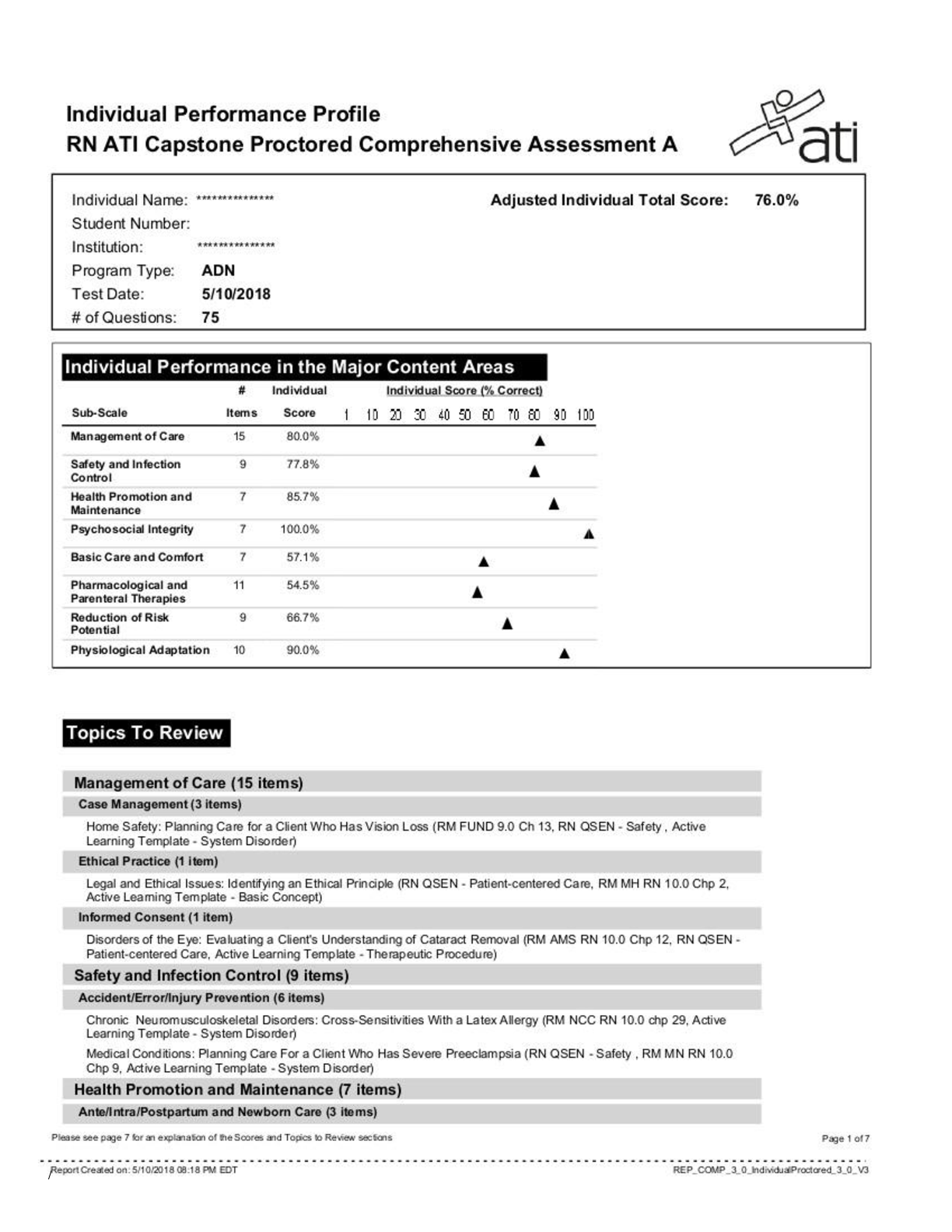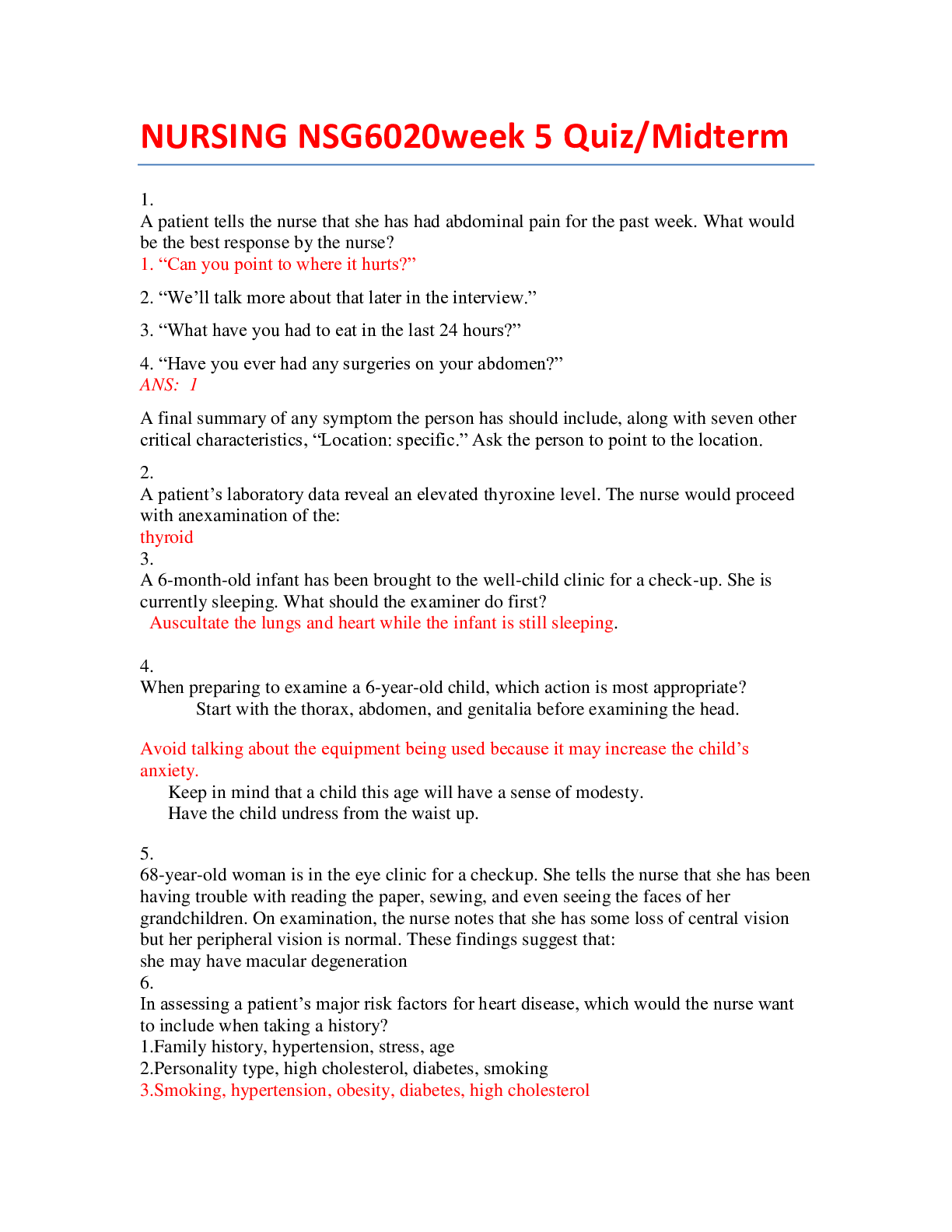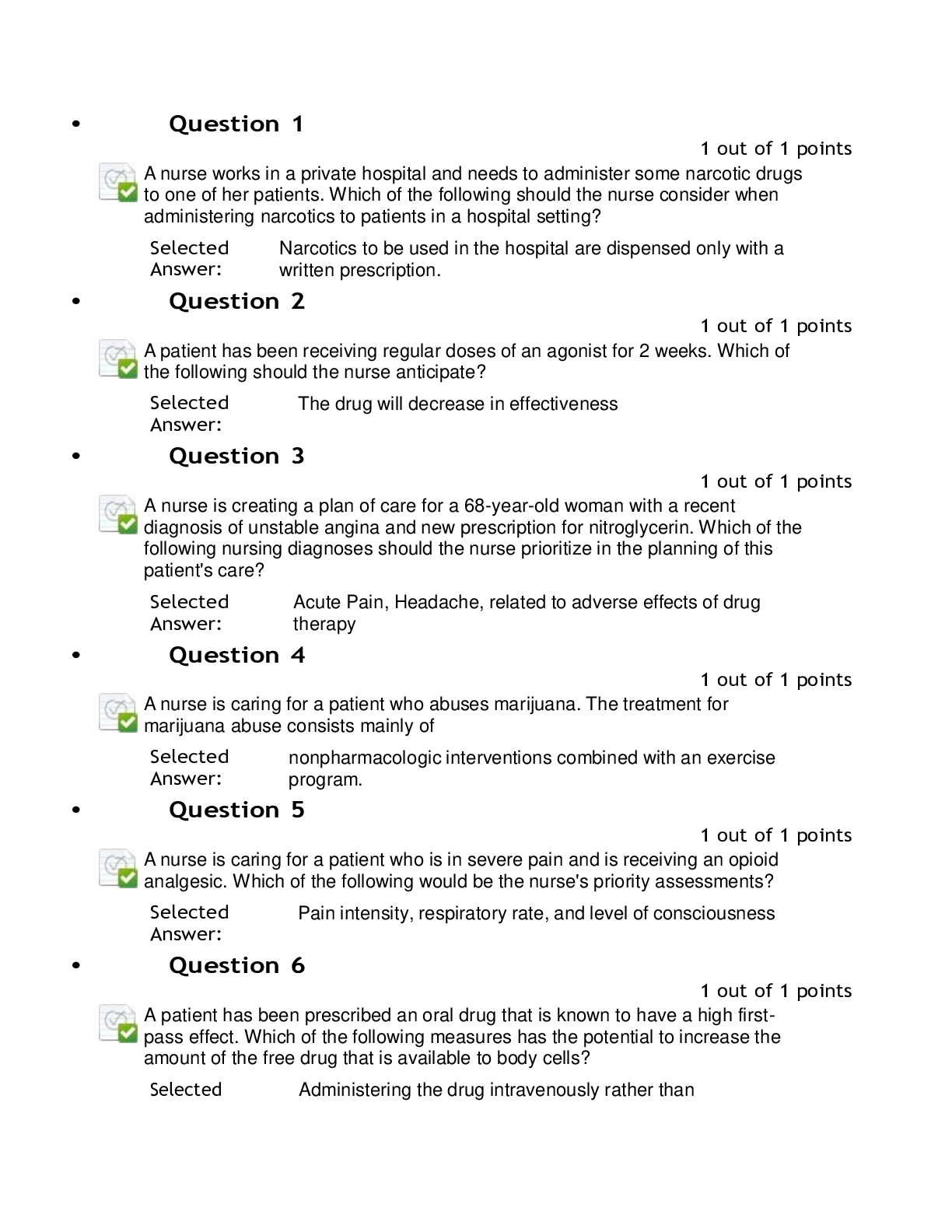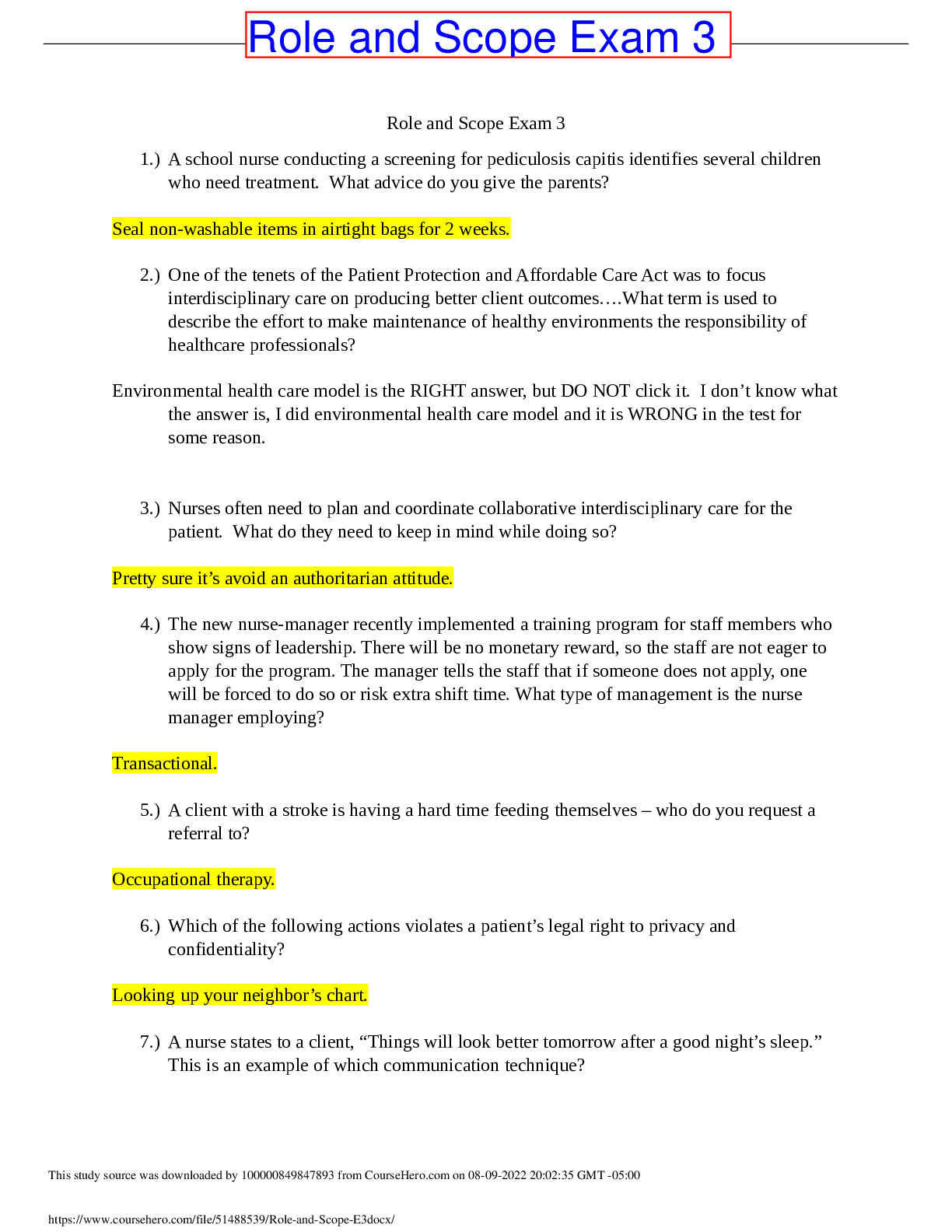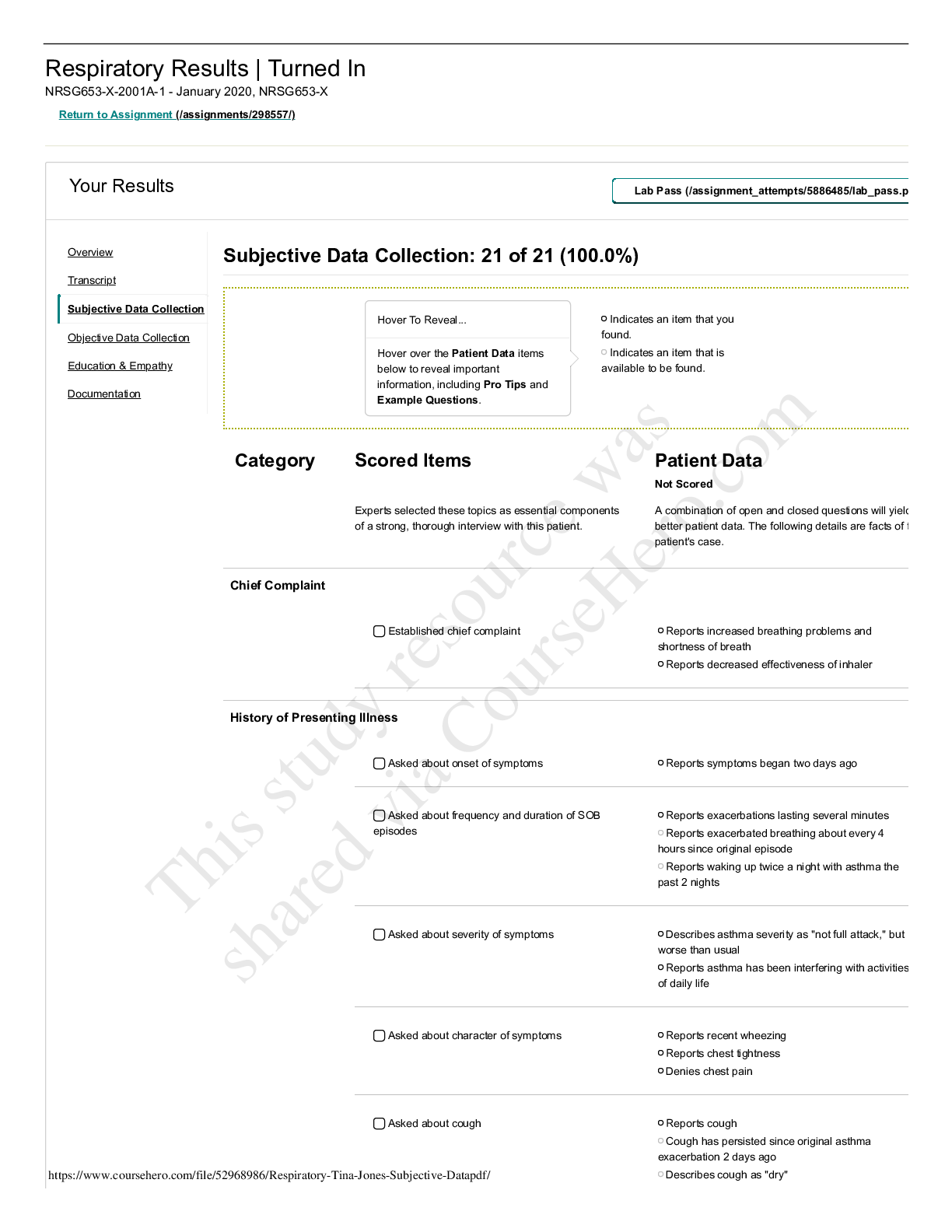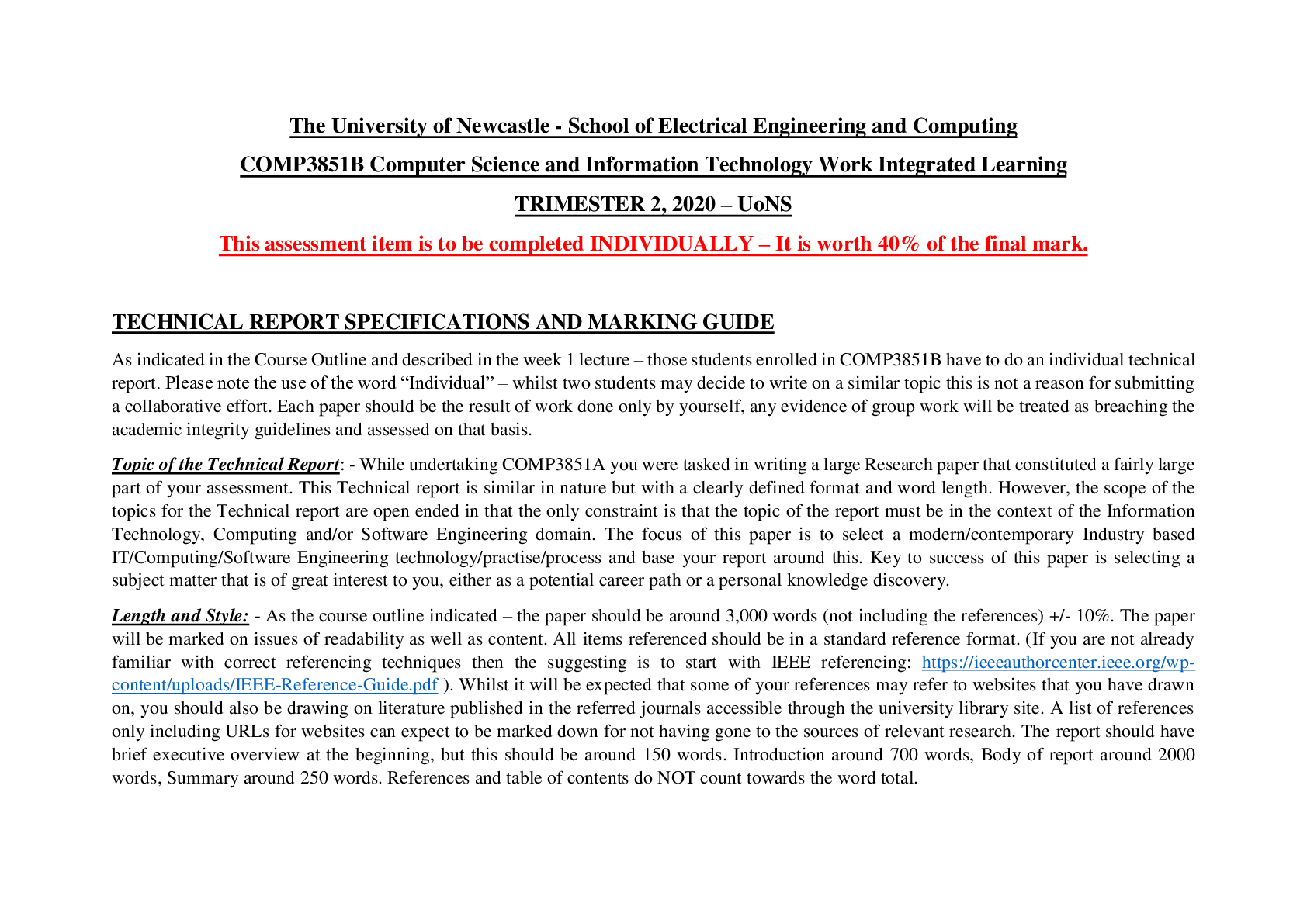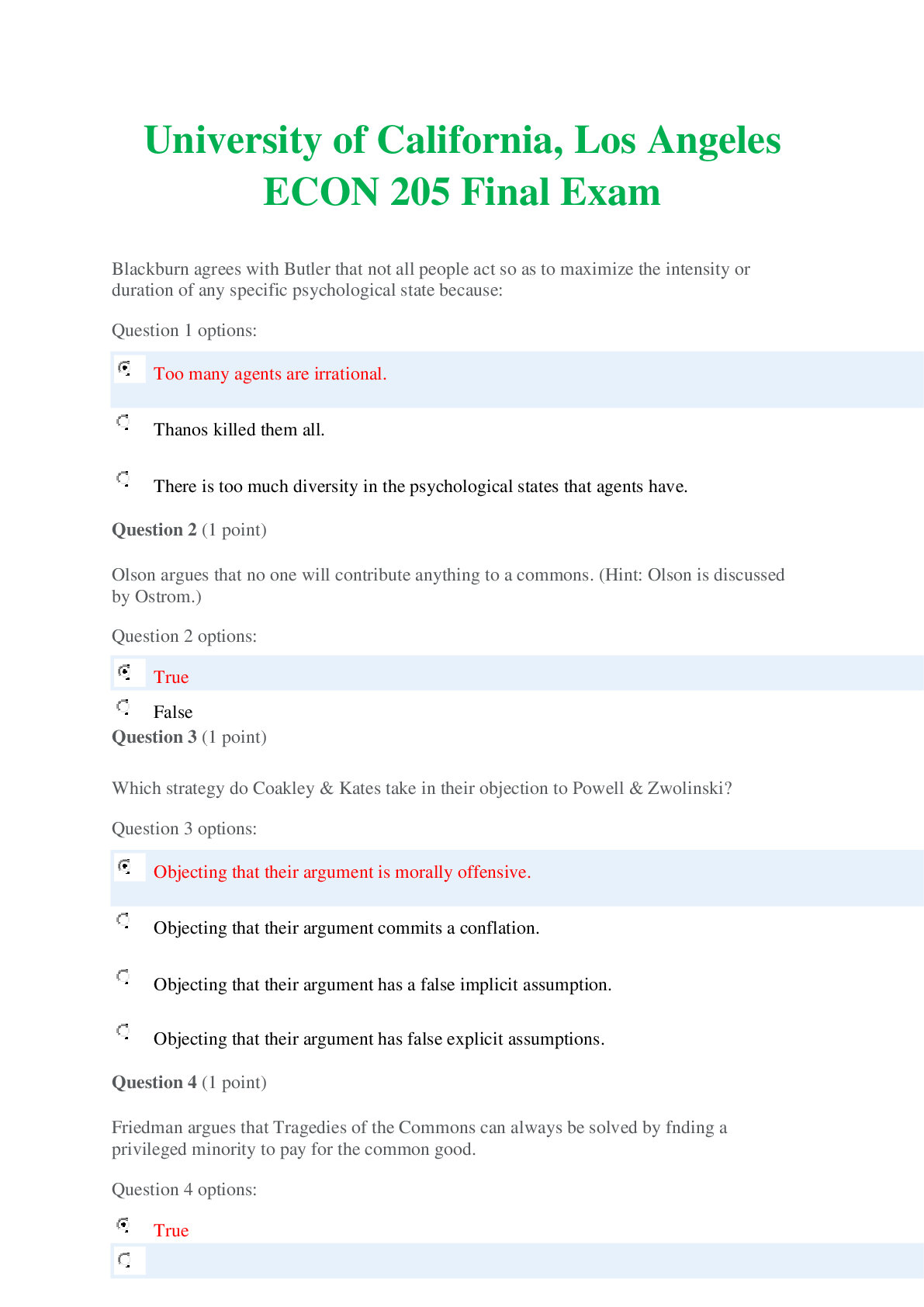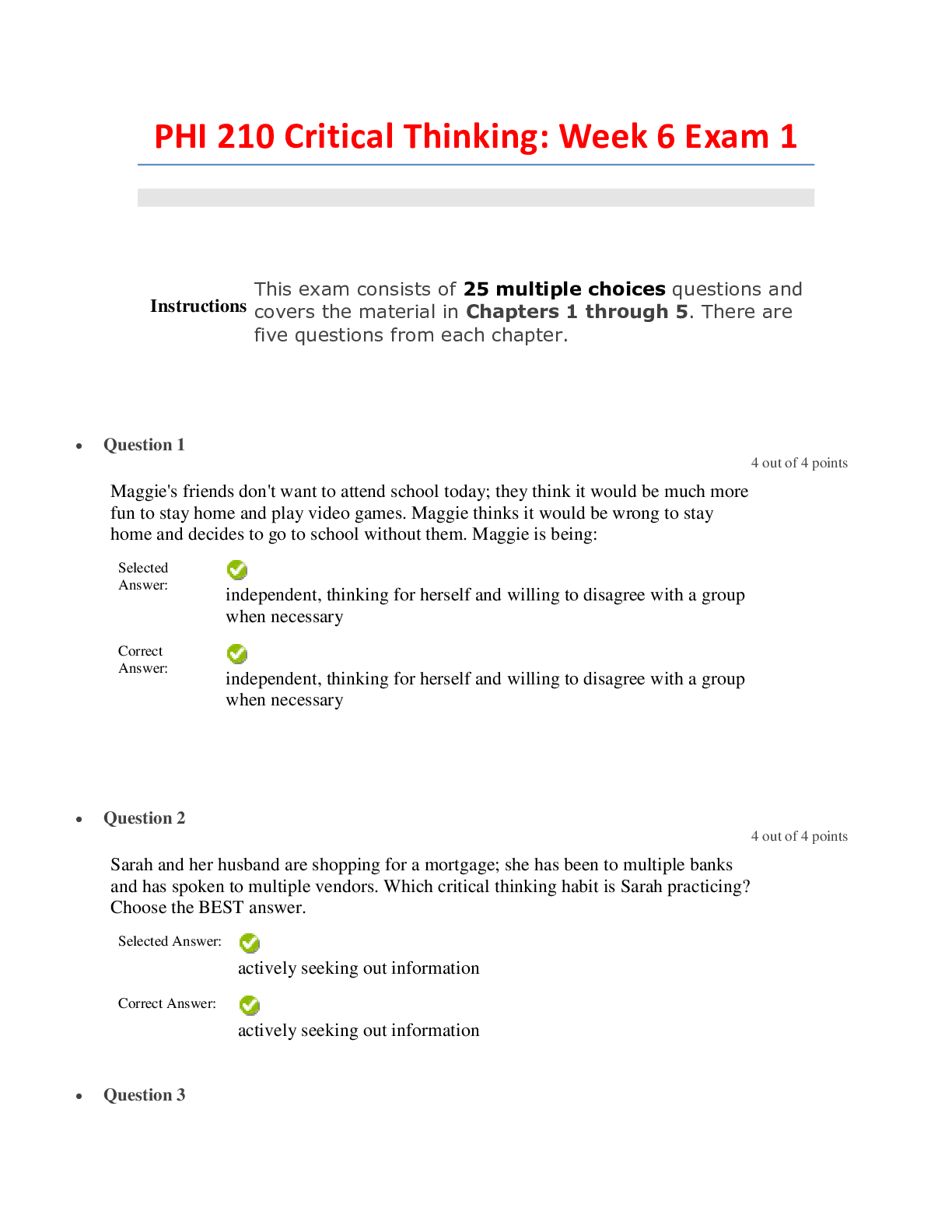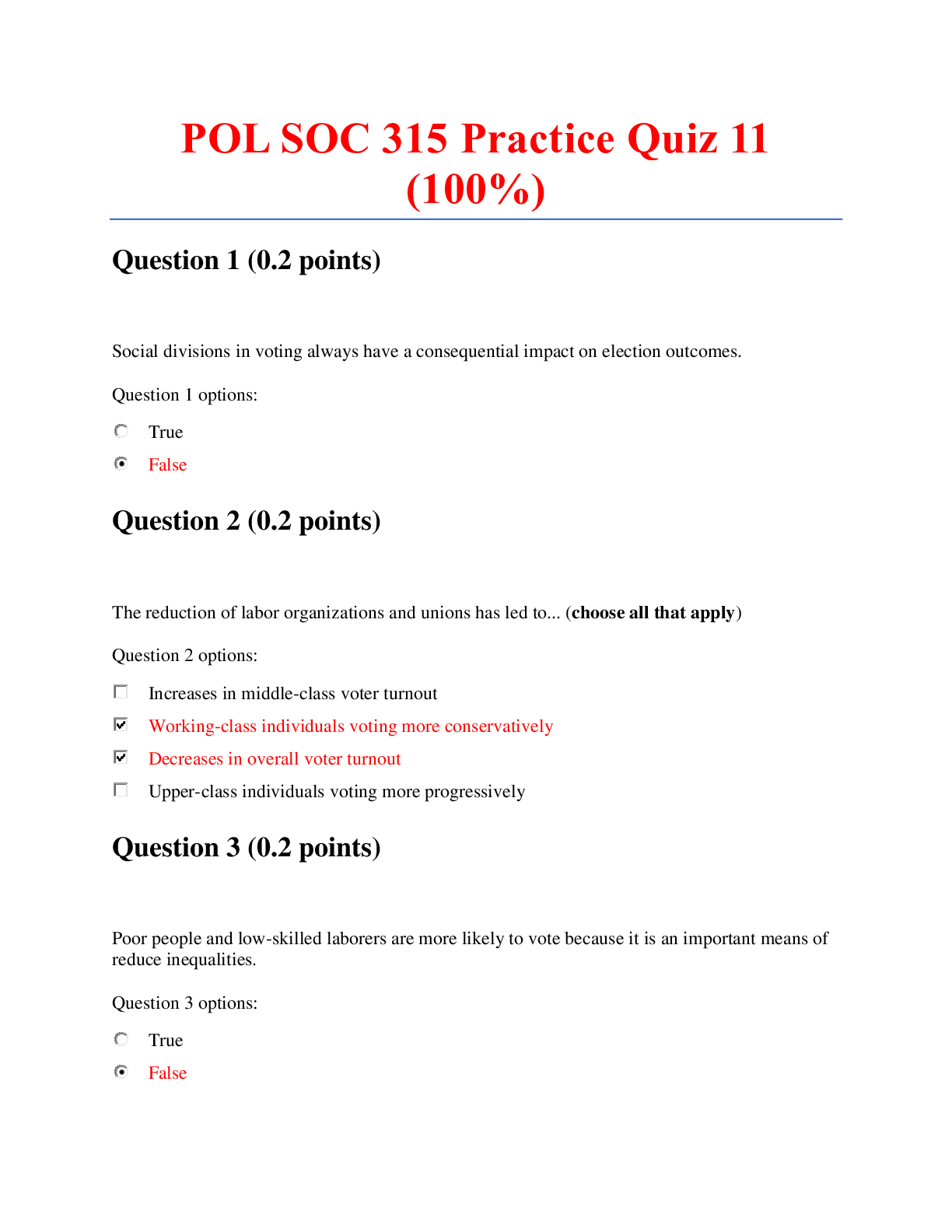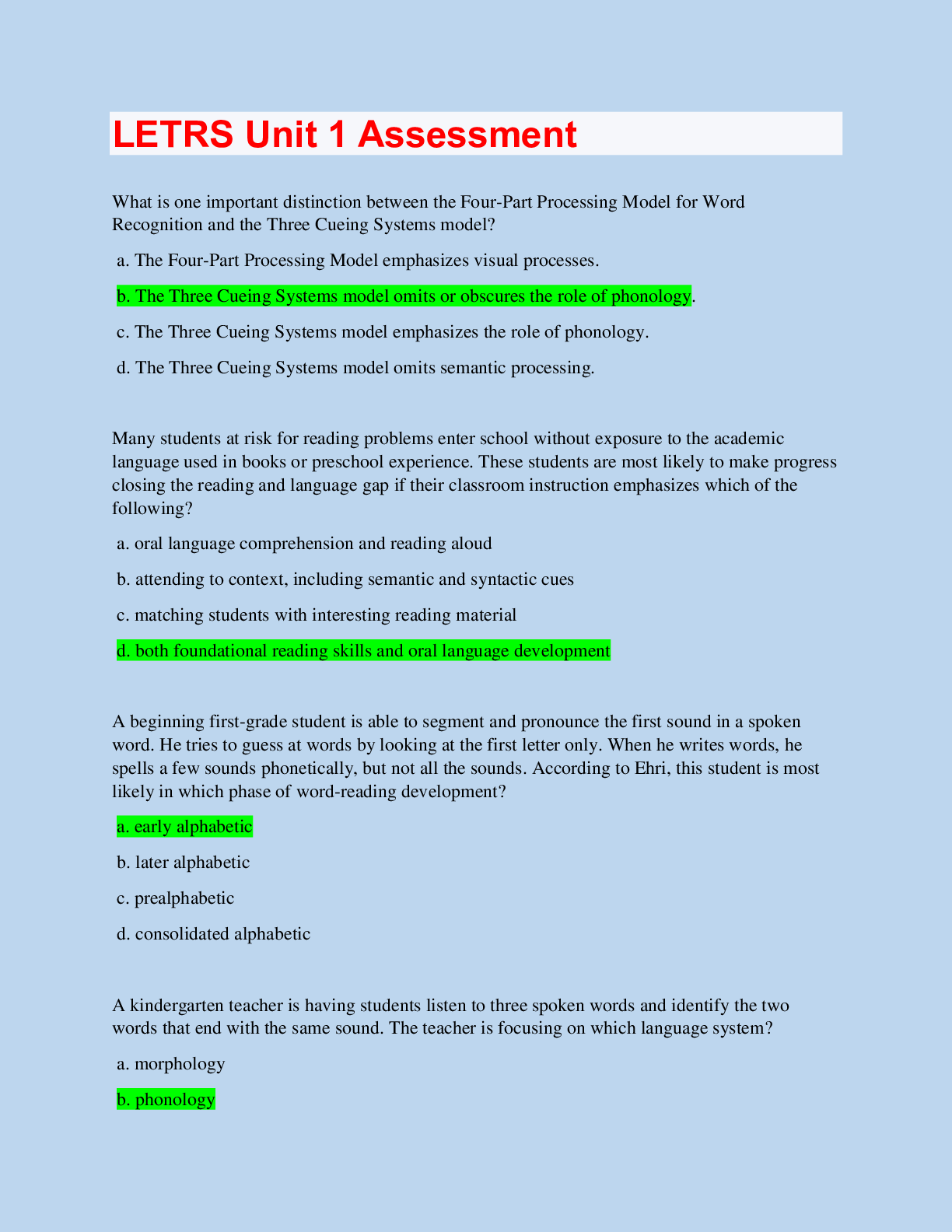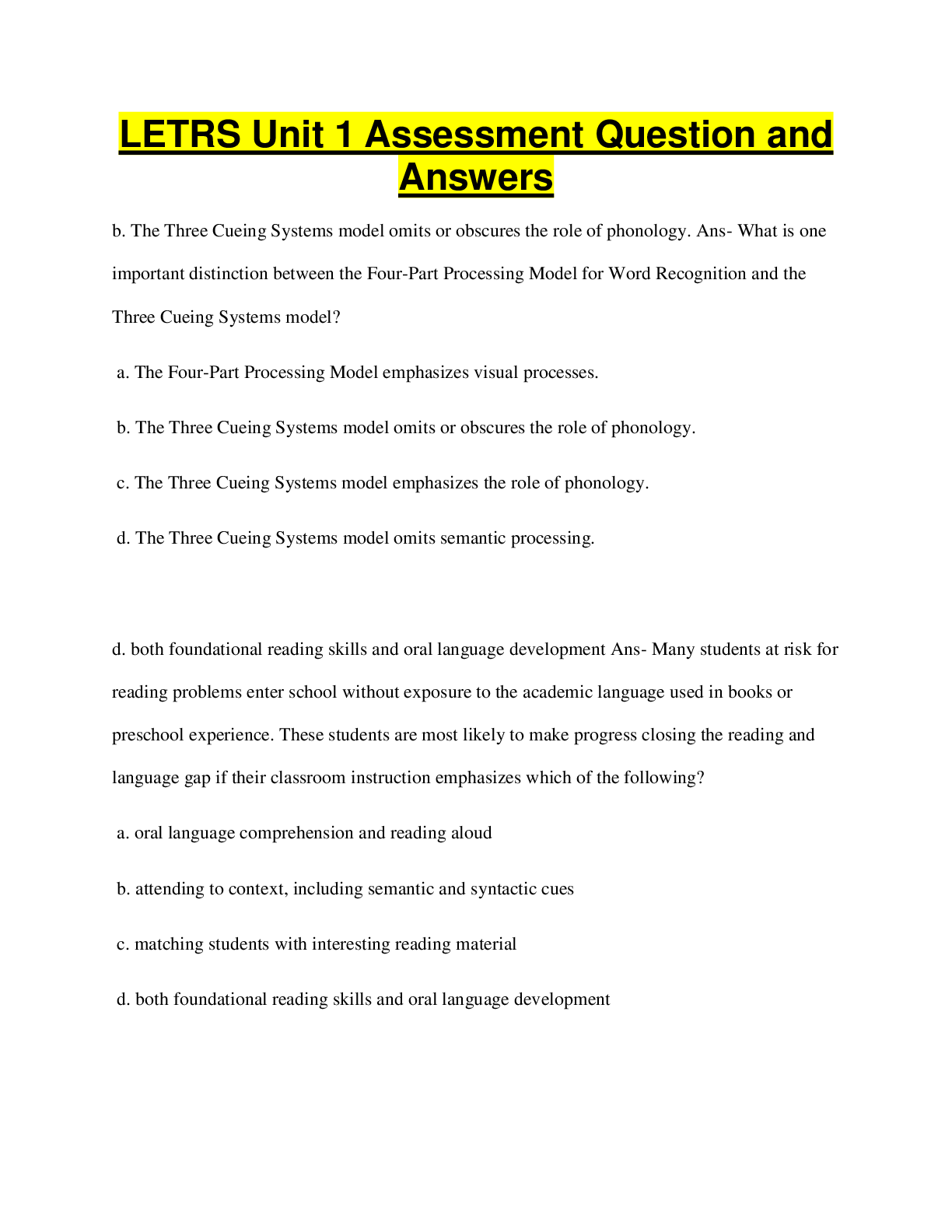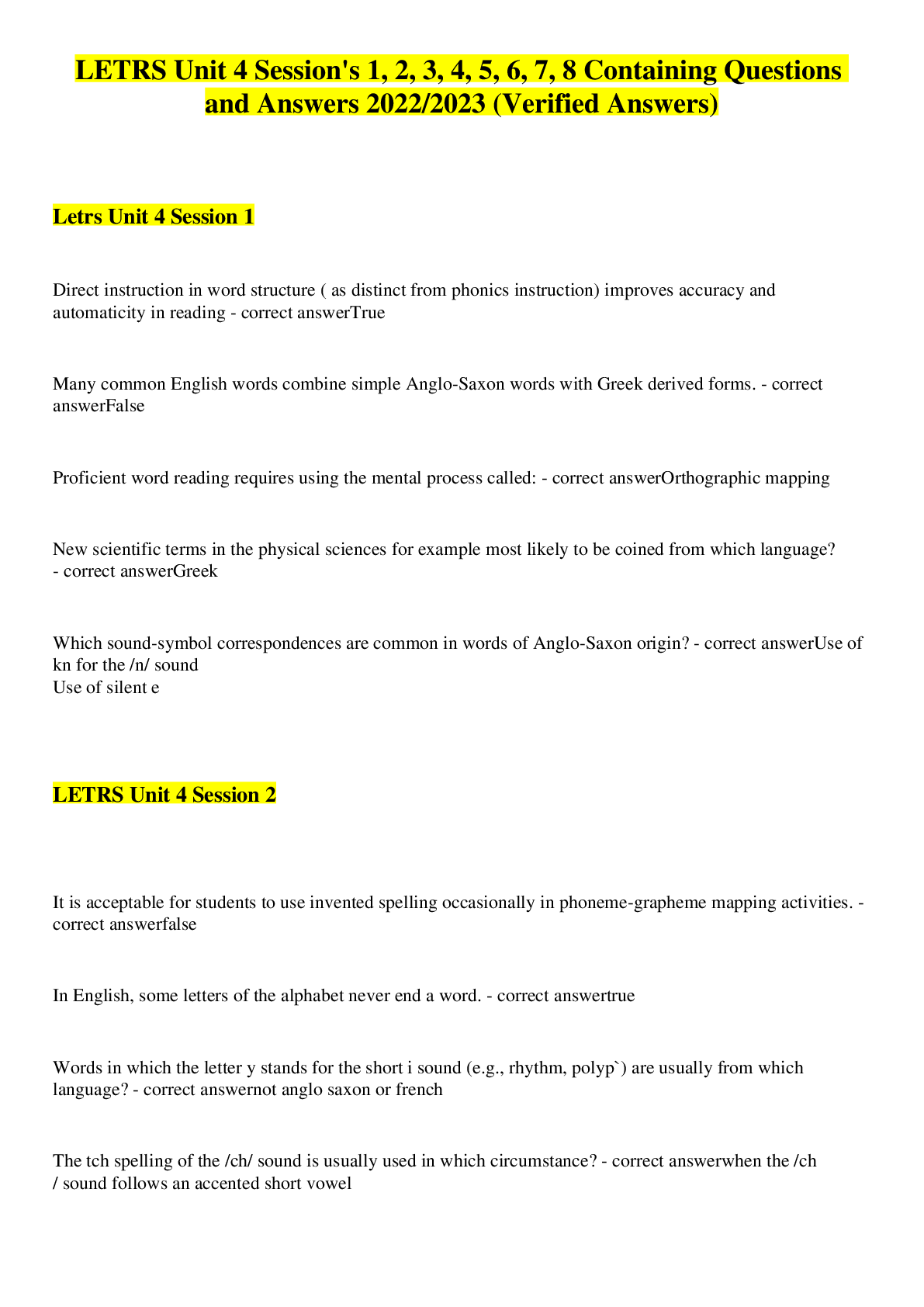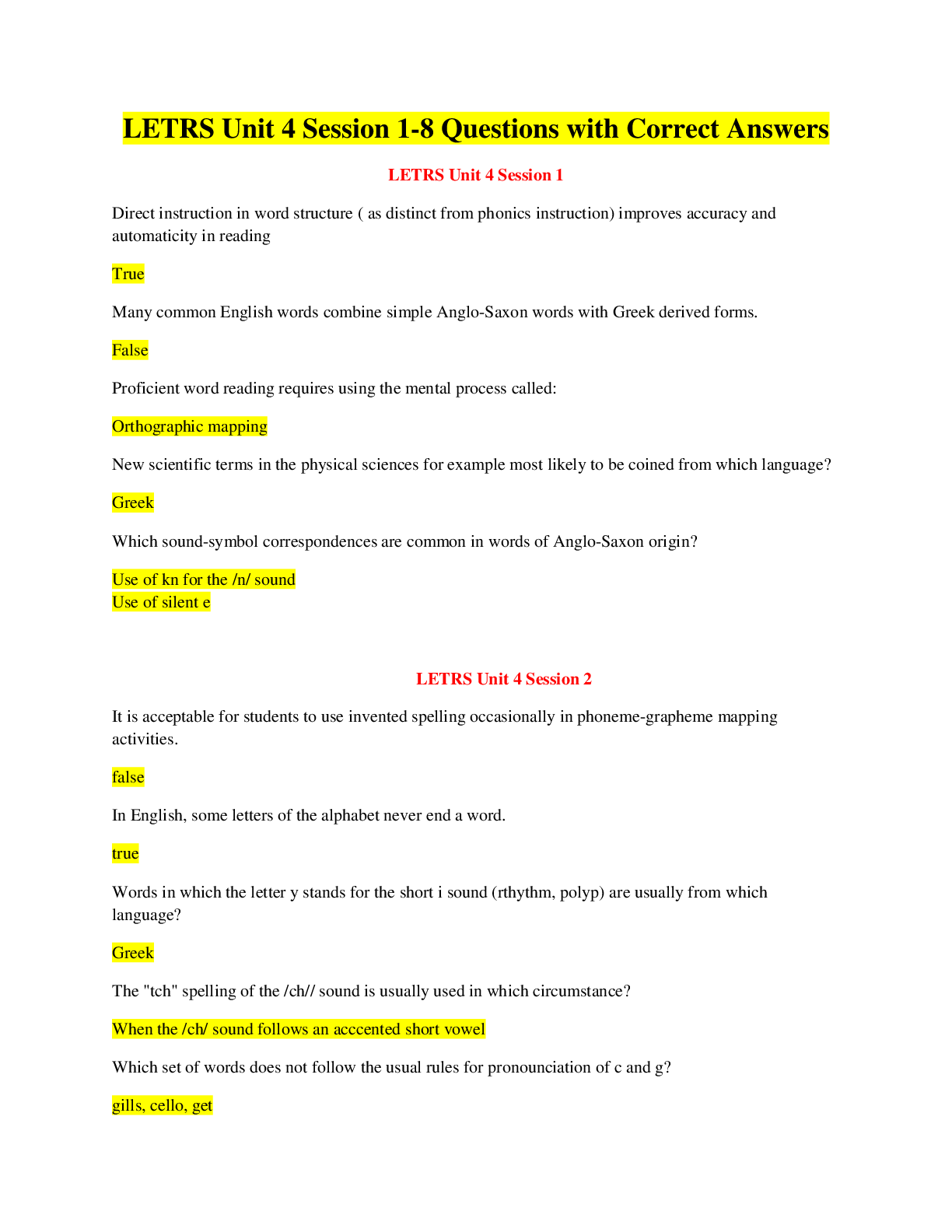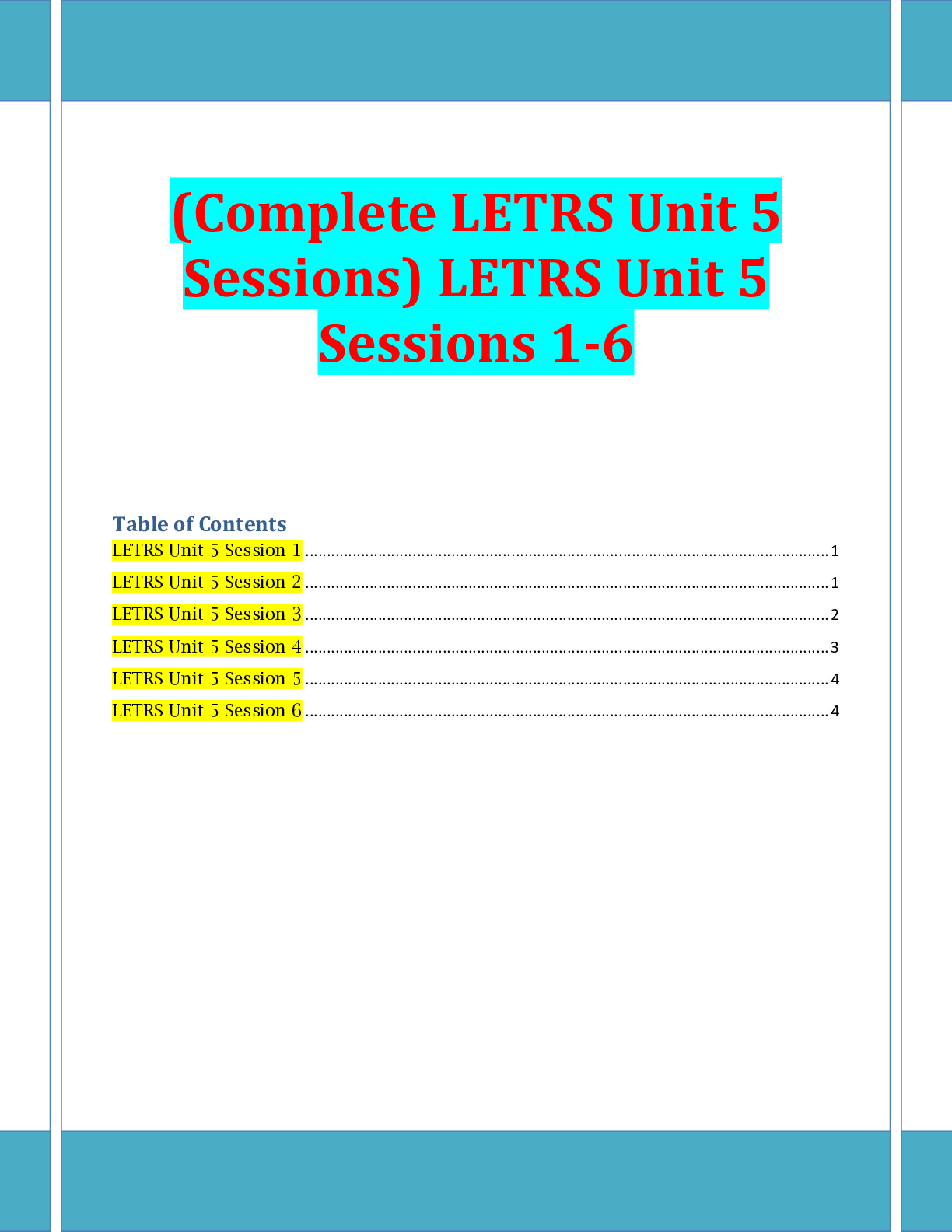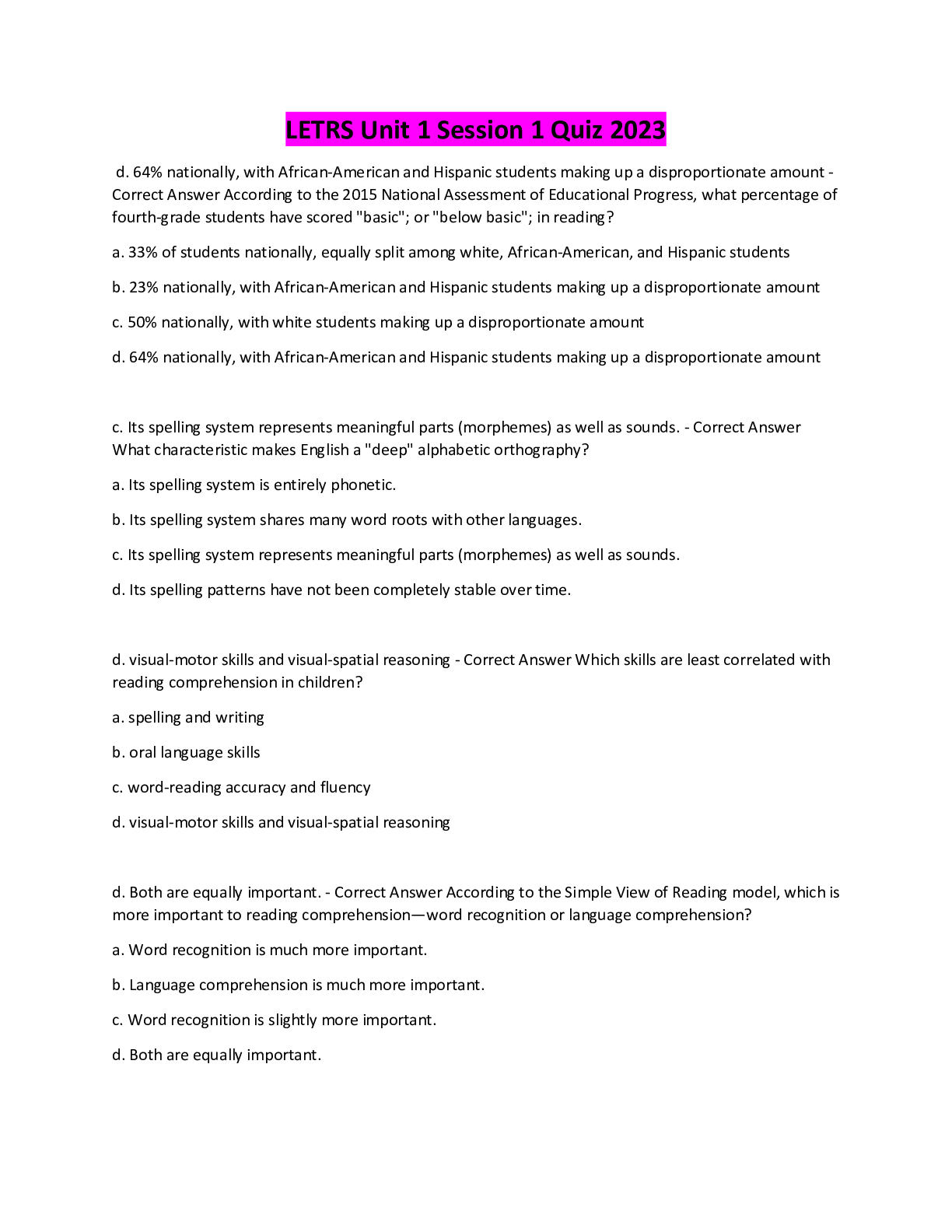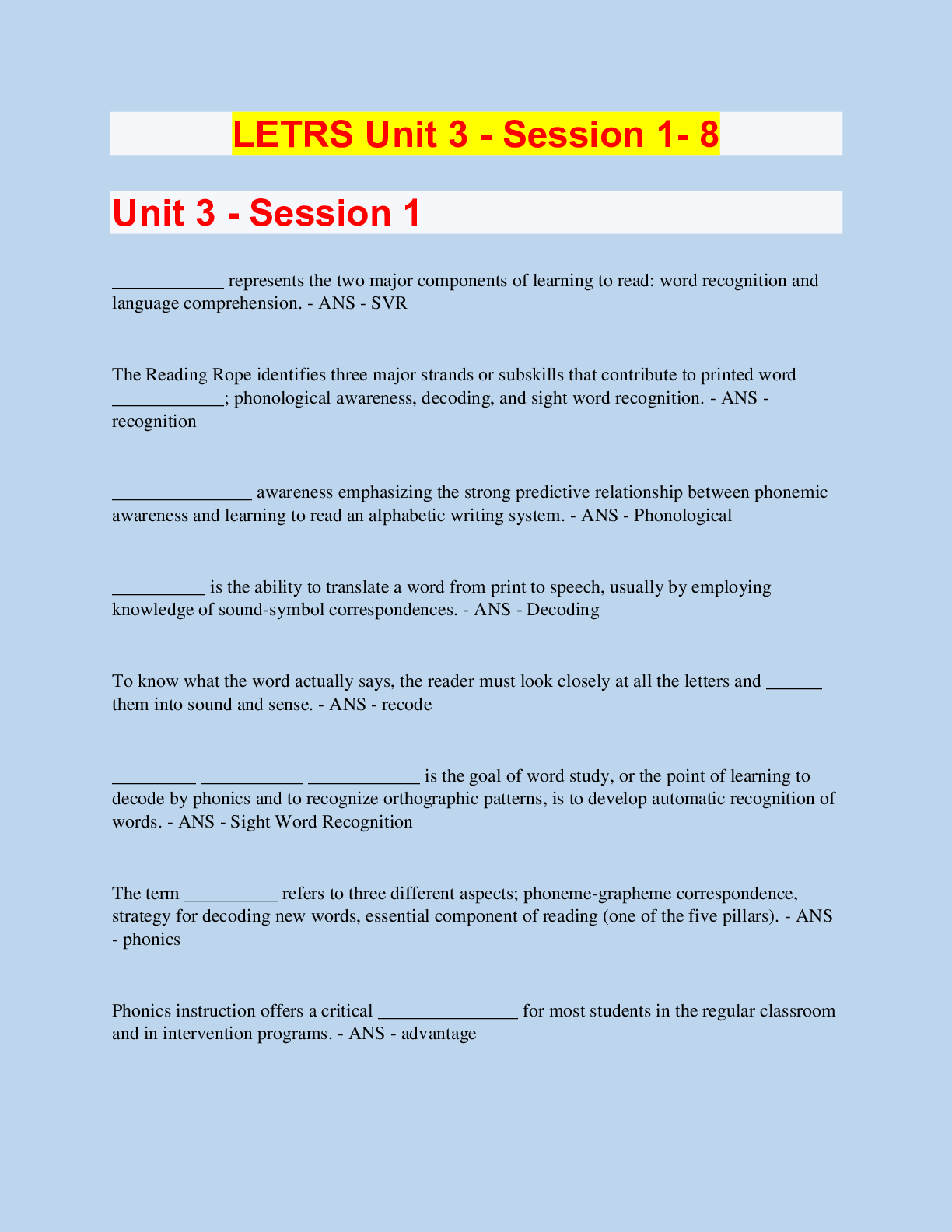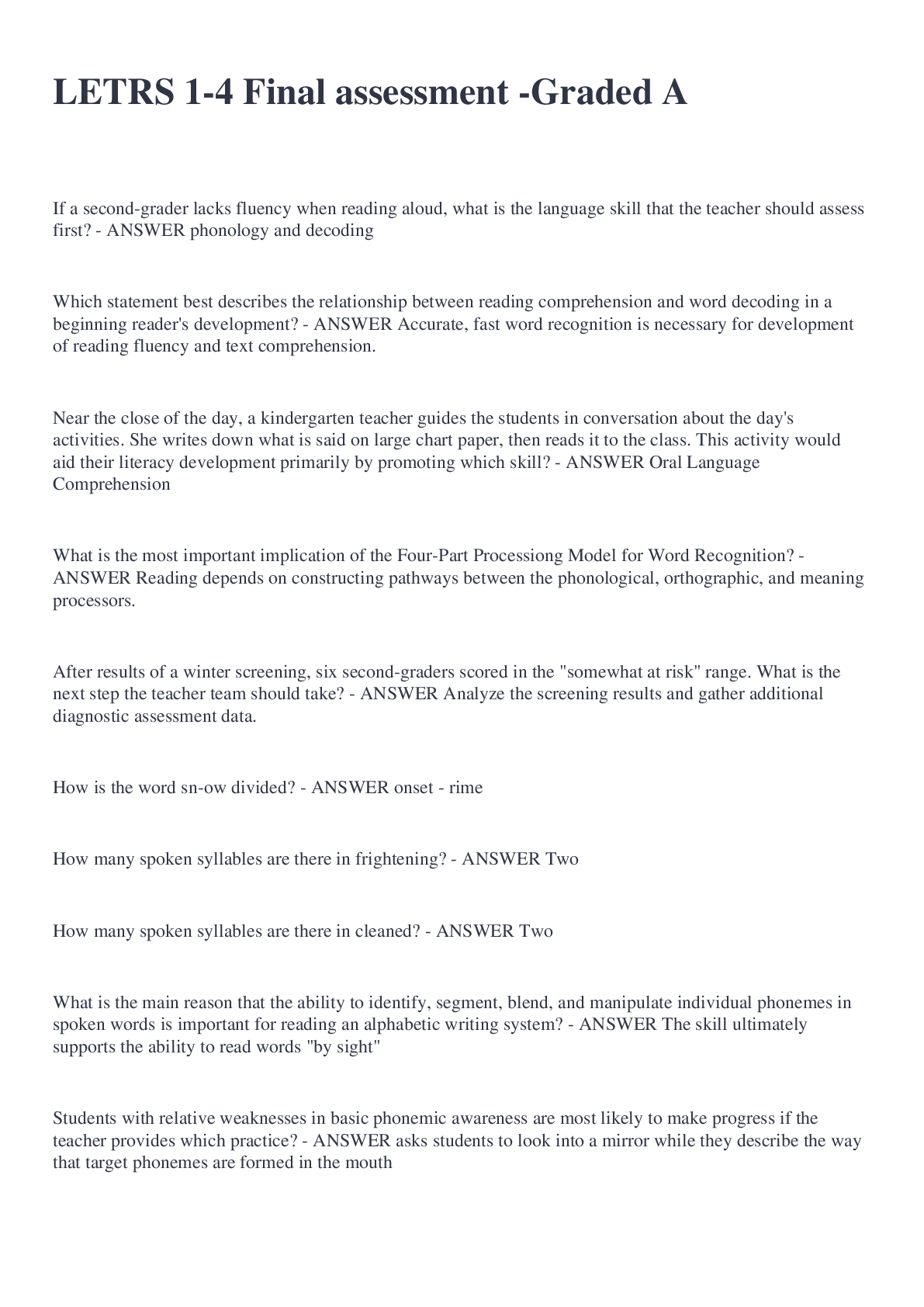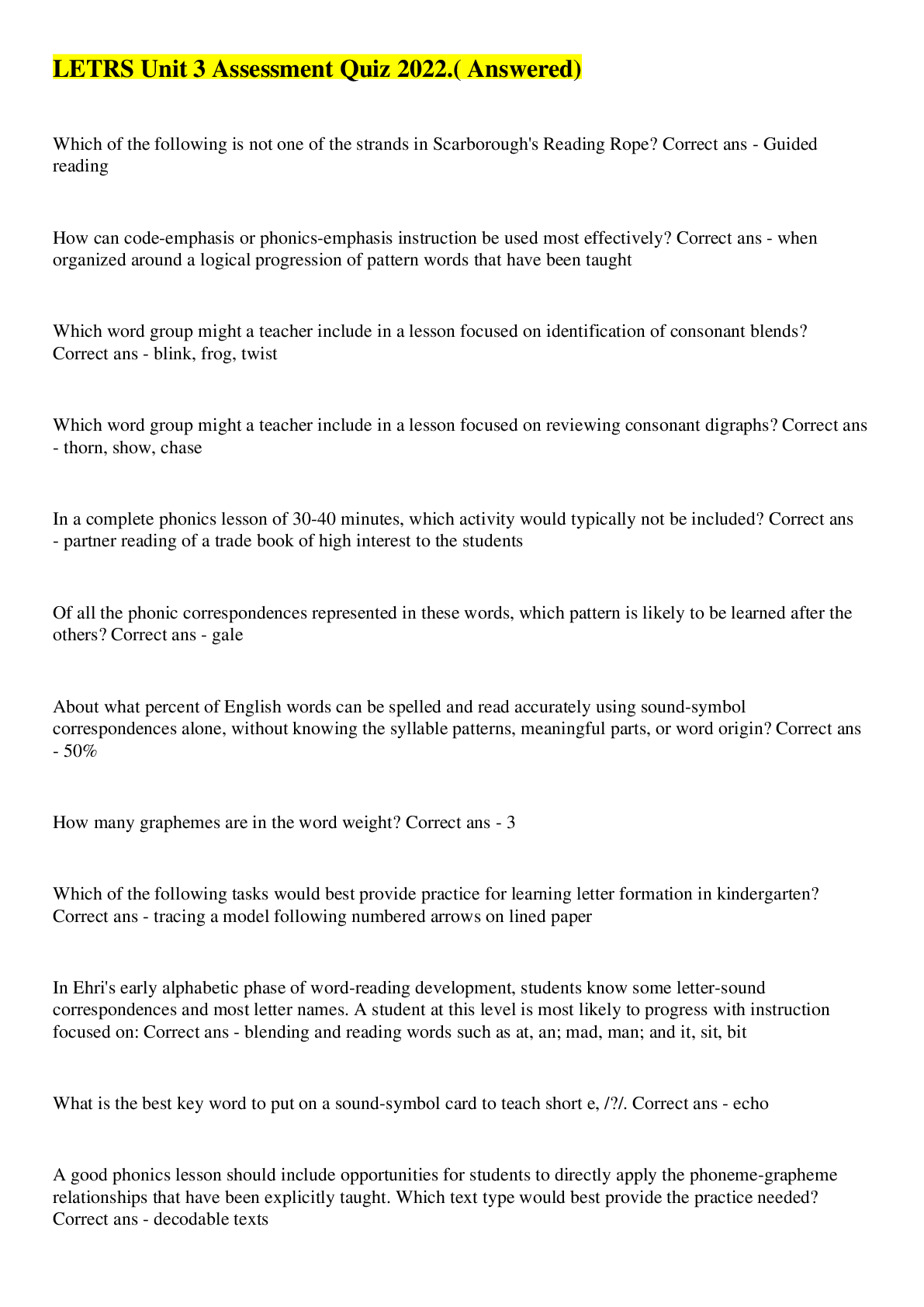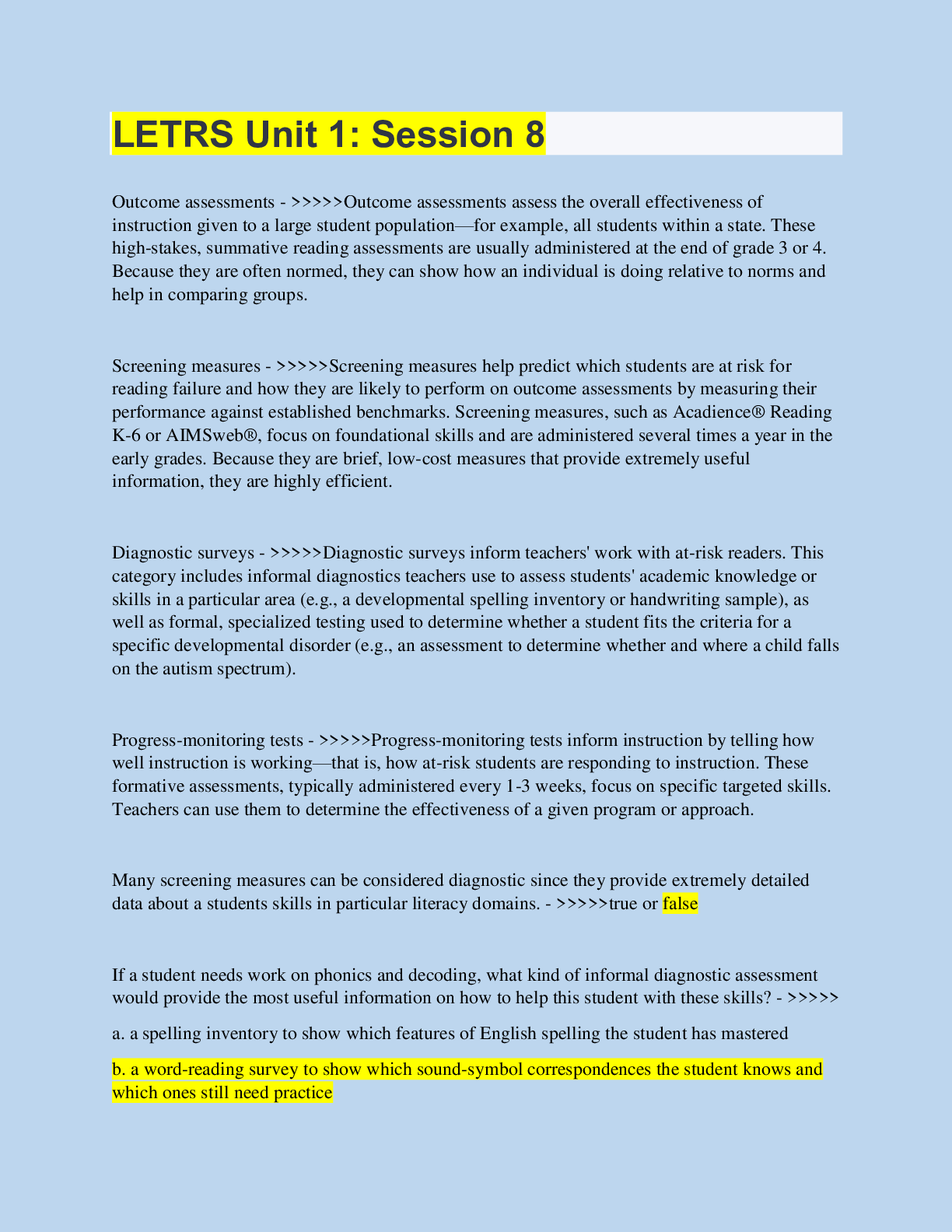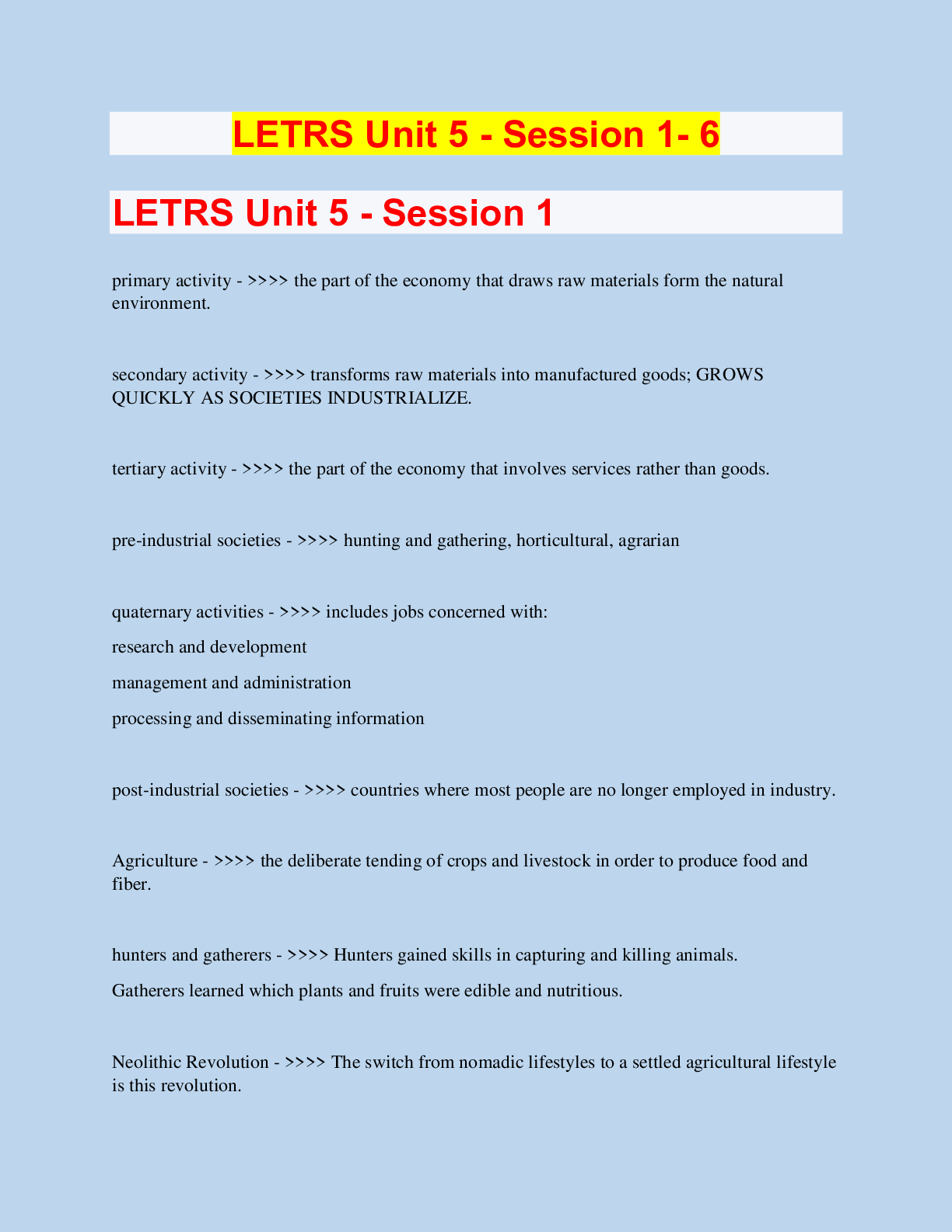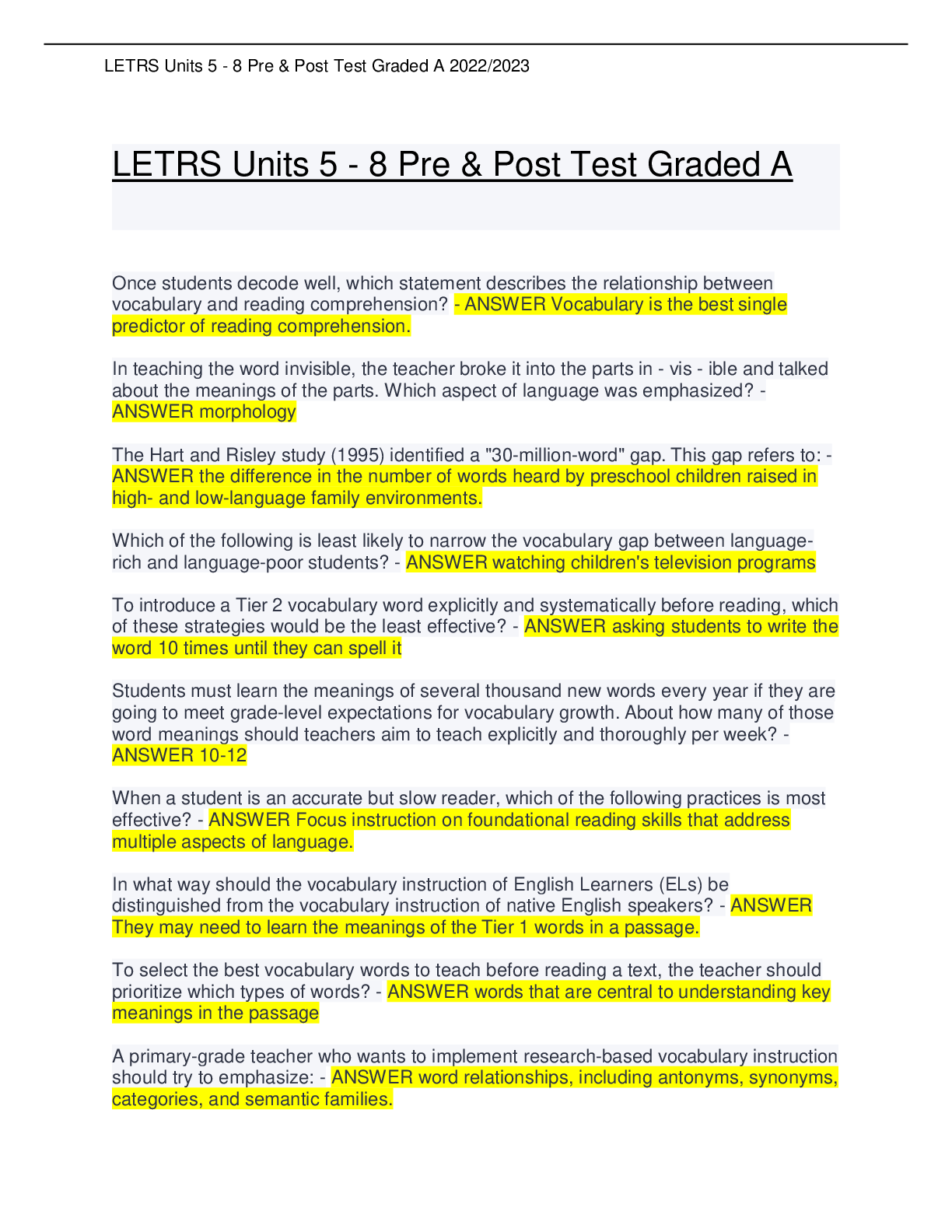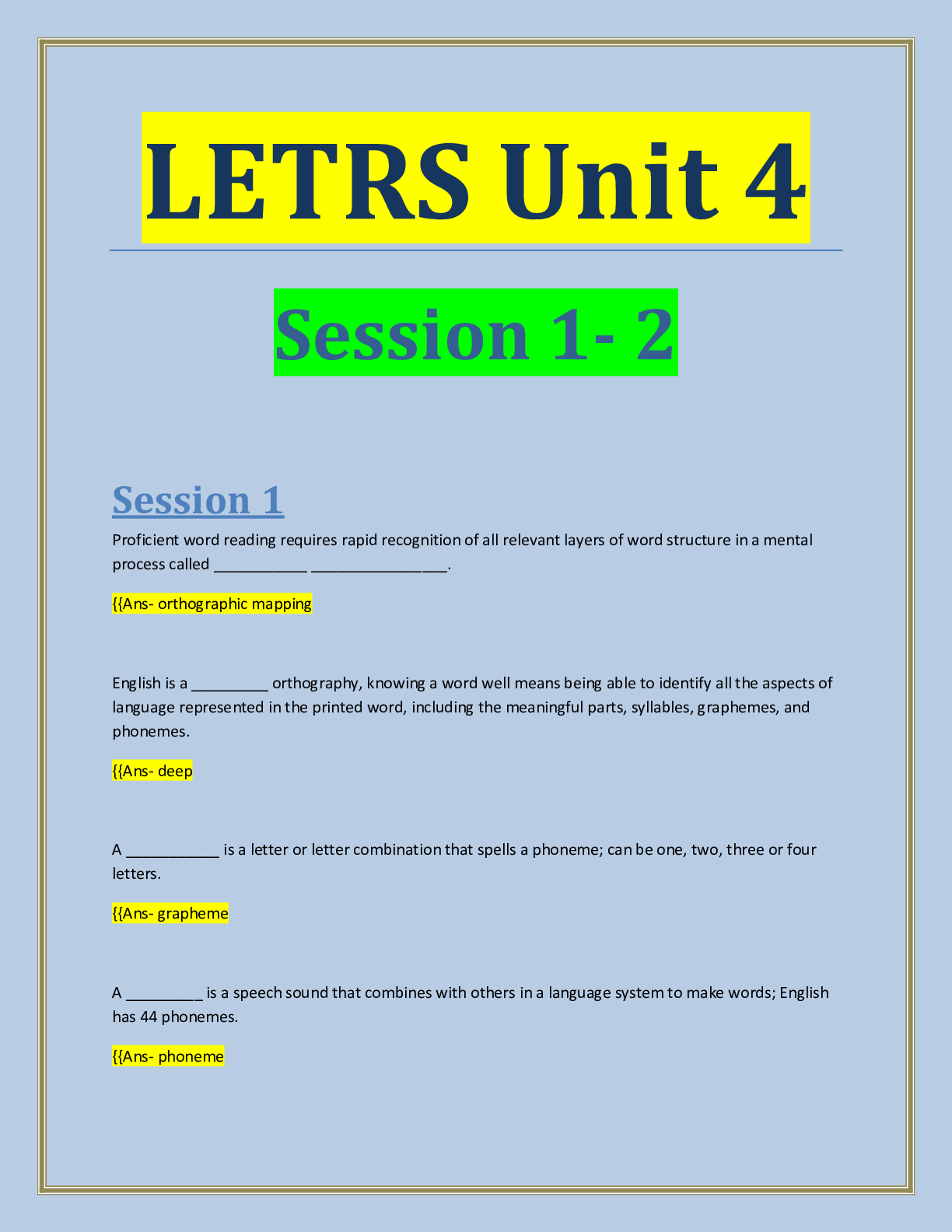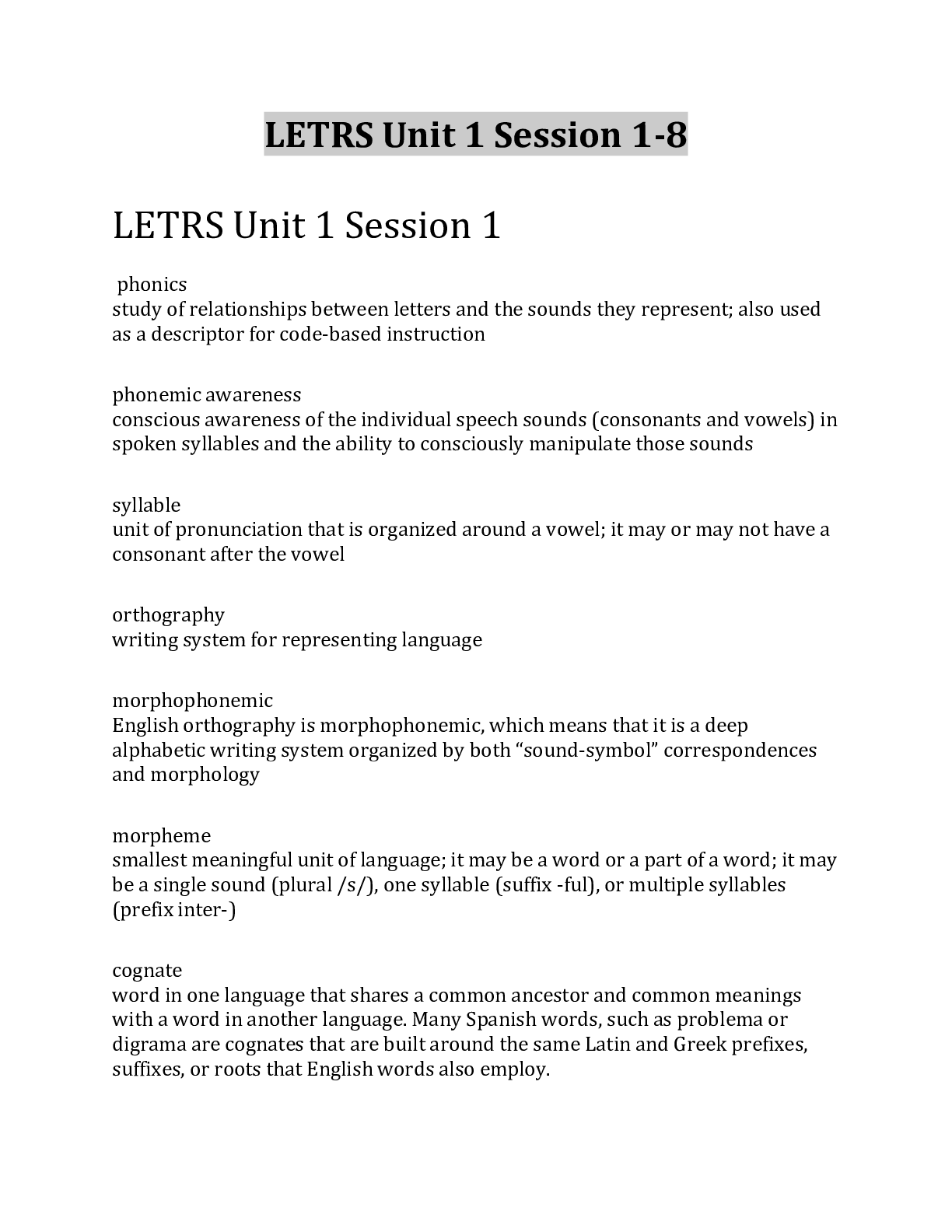APA Quiz Q&A
Document Content and Description Below
APA Quiz Before taking this quiz, you should review APA citation guidelines, for example by reading through Purdue OWL’s Citation Style Chart or relevant sections of a college writing reference b... ook such as Rules for Writers. 1. What does APA stand for? 2. In what academic disciplines is APA style most commonly used? A. The humanities B. The social sciences C. The natural sciences D. Performing arts 3. What information should you include at the very minimum when you cite a source using APA format? A. The author’s last name B. The year of publication C. A complete, properly formatted reference in the “References” section of your paper D. All of the above In-text citations 4. What is the difference between integral and non-integral citations? A. Integral citations are directly relevant to your argument, whereas non-integral citations are merely used to suggest sources that readers might find interesting B. An integral citation refers to a source that you discuss in its entirety; providing a non-integral citation means that you are interested only in specific sections of the source C. In an integral citation, the name of the author is incorporated into the sentence, while a non-integral citation appears in parentheses D. The use of integral citations generally indicates agreement with the sources that are cited, whereas the use of non-integral citations could convey a critical stance 5. When should your citation include a page number? (select any that apply) ❏ When you summarize a source ❏ (When you paraphrase a specific passage in a source) ❏ When you paraphrase a source’s main conclusion ❏ When you quote from a source 6. How should you arrange multiple sources that appear in the same parentheses? A. In chronological order B. In alphabetical order C. In order of relative importance to your argument or analysis, starting with the most important source D. It doesn’t really matter 7. Which of the following series of non-integral citations is formatted correctly? A. Abercrombie (1922), Nielsen (1988), and Smith (1950) B. (Abercrombie, 1922; Nielsen, 1988; Smith, 1950) C. (Abercrombie 1922, Nielsen 1988, Smith 1950) D. (Abercrombie, 1922; Nielsen, 1988; and Smith, 1950) 8. The following passage containing a quote is incorrectly formatted. According to Braskamp, Braskamp, and Merrill, “Education abroad has become an increasingly important educational program (experience) in global learning and development, intercultural competence, intercultural maturity, and intercultural sensitivity of students’.(2009, p. 101) Correct answer: According to Braskamp et al. (2009) “Education abroad has become an increasingly important educational program (experience) in global learning and development, intercultural competence, intercultural maturity, and intercultural sensitivity of students” (p.101). References 9. Which of the following elements are capitalized in a list of references that follows APA conventions? (select any that apply) ❏ Authors’ last names ❏ The first word and proper nouns in article titles, e.g., ‘Car talk’: automobility and Chinese international students in Michigan. ❏ The first word and the principal words in journal titles (all the words except articles, prepositions, or conjunctions), e.g. Journal of Pulmonary and Clinical Research ❏ Publisher names and publication cities 10. TRUE or FALSE: In the list of references, both book citations and journal article citations should include the name of the publisher. 11. TRUE or FALSE: If multiple publications by the same author are listed, they should be given in chronological order. 12. TRUE or FALSE: Authors are always named by their last names and initials in the list of references. 13. What abbreviation is used when the year of publication is unknown? • n.d. 14. Which of the following references is formatted incorrectly? ❏ Hammer, M. R. (1989). Intercultural communication competence. In M. K. Asante & W. B. Gudykunst (Eds.), The handbook of international and intercultural communication (pp. 247-260). Newbury Park, CA: Sage. ❏ Shaftel, J., Shaftel, T., & Ahluwalia, R. (2007). International educational experience and intercultural competence. Journal of Business & Economics, 6(1), 25-34. ❏ Kim, M. (1993). Culture-based conversational constraints in explaining cross-cultural strategic competence. In R. L. Wiseman & J. Koester (Eds.), Intercultural communication competence (pp. 132-150). ❏ Taylor, E. W. (1994). Intercultural Competency: A Transformative Learning Process. Adult Education Quarterly, 44(3), 154-174. ❏ Institute of International Education. (2008). Open doors report. Retrieved from http://www.iie.org/opendoors. 15. Correct the following citation: Greenholtz, Joe. (2000). Assessing cross-cultural competence in transnational education: The intercultural development inventory. Higher Education in Europe, 411-416. [Show More]
Last updated: 8 months ago
Preview 1 out of 3 pages
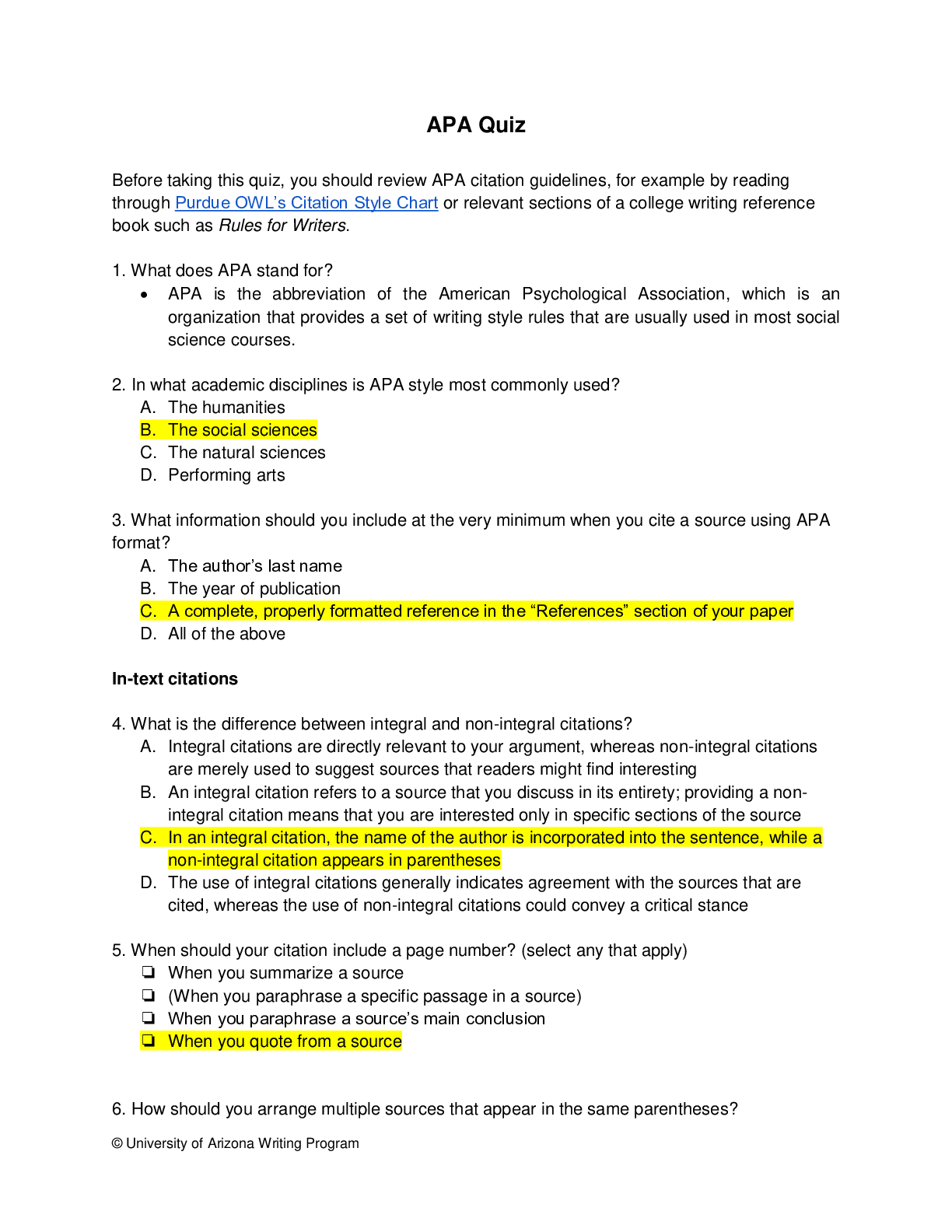
Reviews( 2 )

by luciana92 · 3 years ago
No, The answers are all correct!! by QuizMaster. 3 years ago

by QuizMaster · 3 years ago
Document information
Connected school, study & course
About the document
Uploaded On
Nov 02, 2020
Number of pages
3
Written in
Additional information
This document has been written for:
Uploaded
Nov 02, 2020
Downloads
1
Views
363


